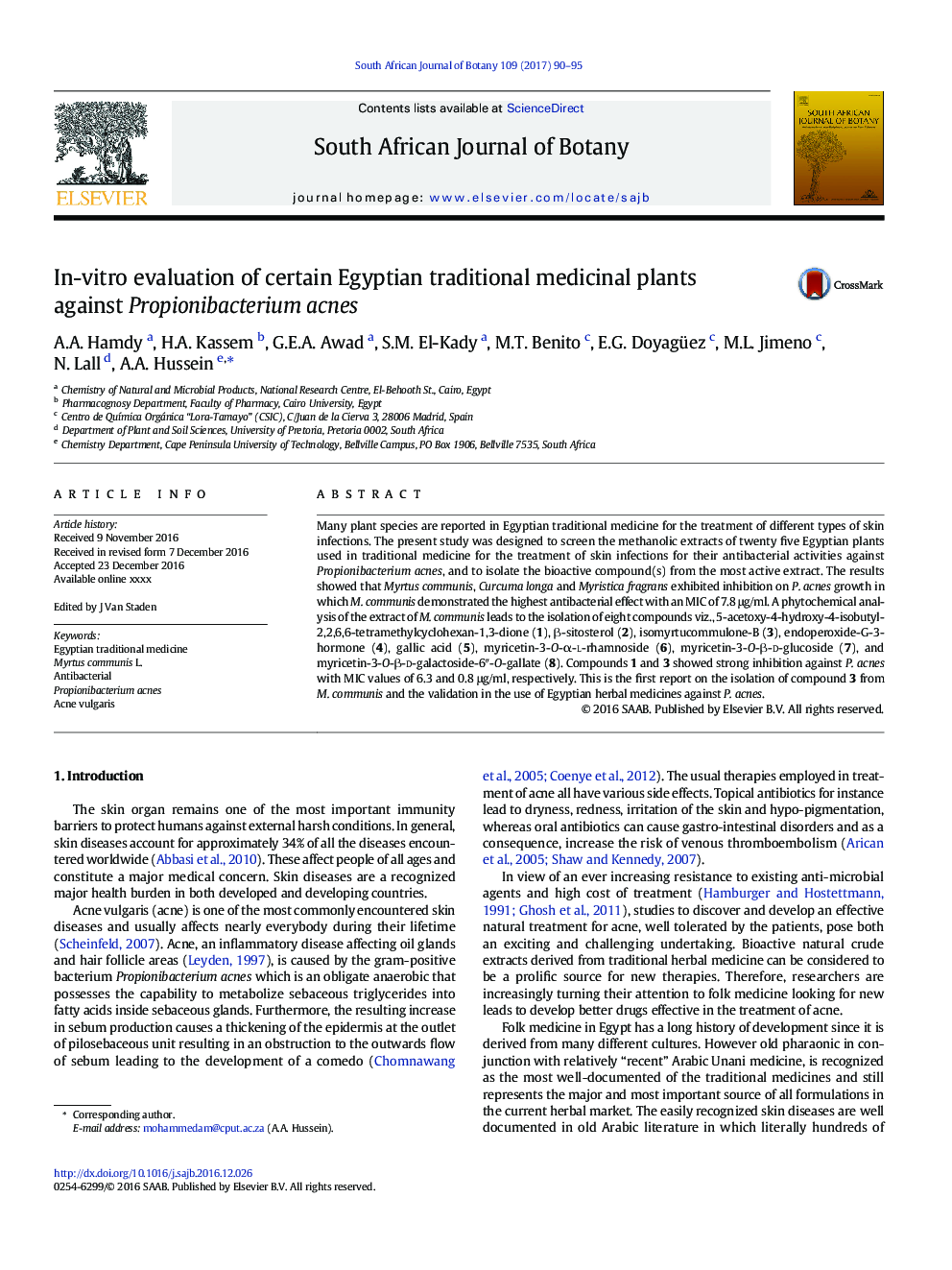| Article ID | Journal | Published Year | Pages | File Type |
|---|---|---|---|---|
| 5763037 | South African Journal of Botany | 2017 | 6 Pages |
Abstract
Many plant species are reported in Egyptian traditional medicine for the treatment of different types of skin infections. The present study was designed to screen the methanolic extracts of twenty five Egyptian plants used in traditional medicine for the treatment of skin infections for their antibacterial activities against Propionibacterium acnes, and to isolate the bioactive compound(s) from the most active extract. The results showed that Myrtus communis, Curcuma longa and Myristica fragrans exhibited inhibition on P. acnes growth in which M. communis demonstrated the highest antibacterial effect with an MIC of 7.8 μg/ml. A phytochemical analysis of the extract of M. communis leads to the isolation of eight compounds viz., 5-acetoxy-4-hydroxy-4-isobutyl-2,2,6,6-tetramethylcyclohexan-1,3-dione (1), β-sitosterol (2), isomyrtucommulone-B (3), endoperoxide-G-3-hormone (4), gallic acid (5), myricetin-3-O-α-l-rhamnoside (6), myricetin-3-O-β-d-glucoside (7), and myricetin-3-O-β-d-galactoside-6â³-O-gallate (8). Compounds 1 and 3 showed strong inhibition against P. acnes with MIC values of 6.3 and 0.8 μg/ml, respectively. This is the first report on the isolation of compound 3 from M. communis and the validation in the use of Egyptian herbal medicines against P. acnes.
Related Topics
Life Sciences
Agricultural and Biological Sciences
Agronomy and Crop Science
Authors
A.A. Hamdy, H.A. Kassem, G.E.A. Awad, S.M. El-Kady, M.T. Benito, E.G. Doyagüez, M.L. Jimeno, N. Lall, A.A. Hussein,
